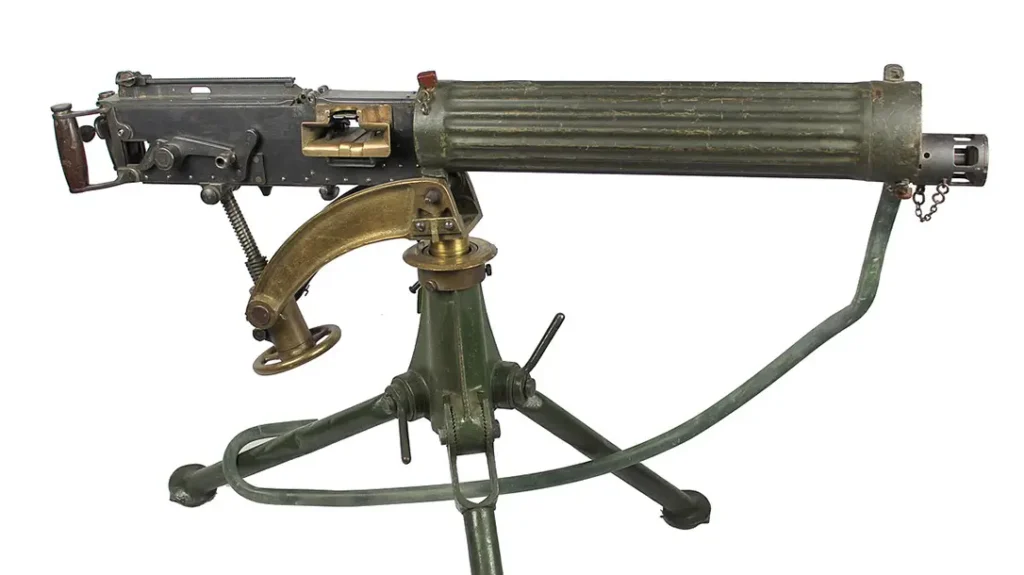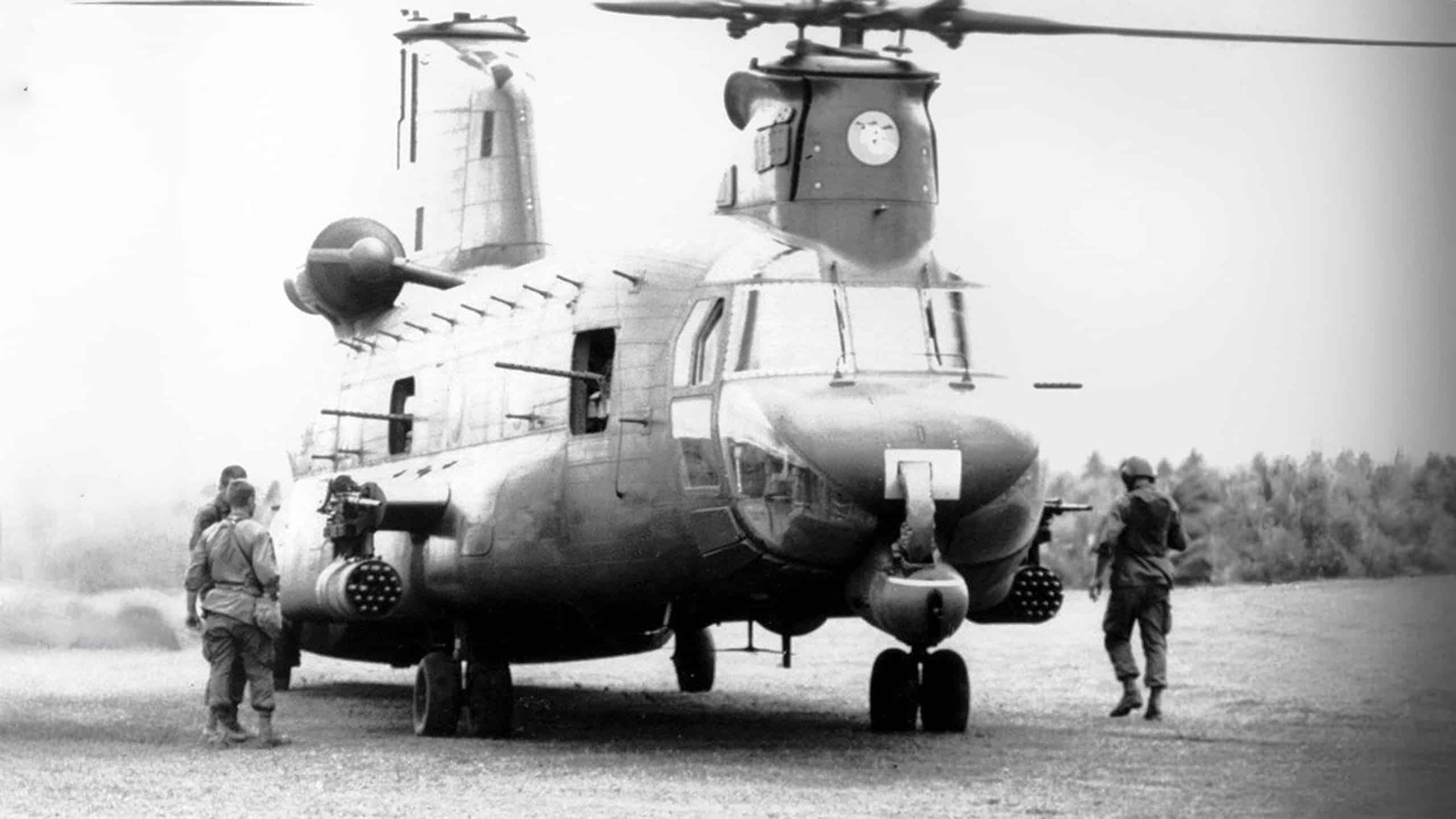The Giggle Effect is Real
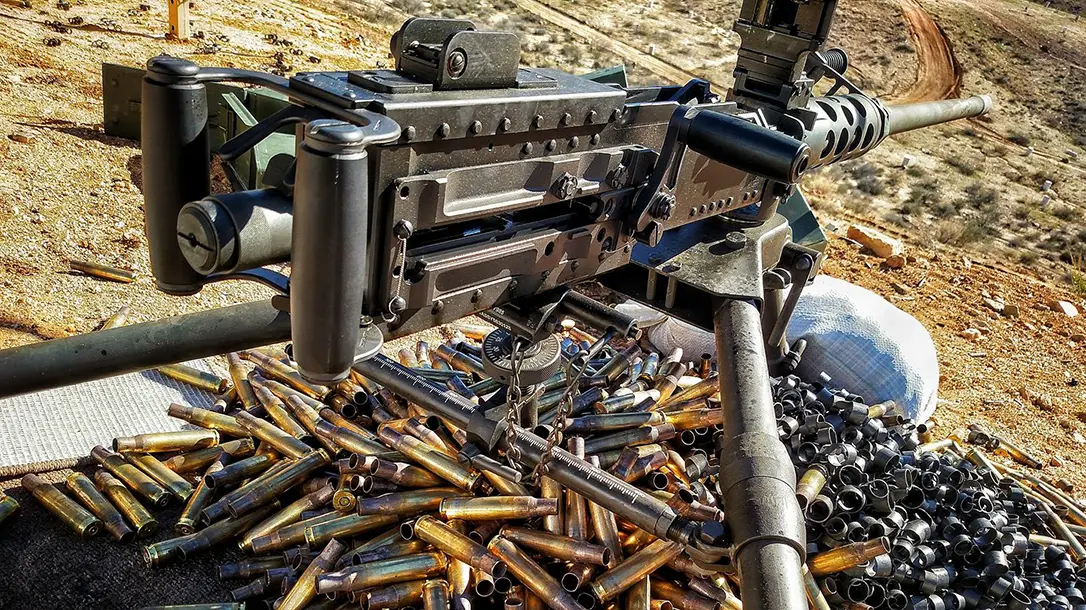
While guns serve purposes that we recognize and respect, they are also fun to shoot. A vast majority of shooters are relegated to semi-auto or single-shot blasters. However, there is a special realm in the gun world. A world where one press of the trigger releases a stream of “Brrrrraaaattttt”. These are full-auto guns, and today we’re looking at 15 iconic select-fire guns.
Time to Induct the All-Time Best Giggle-Switch Guns to TL’s Firearm Hall of Fame
Advertisement — Continue Reading Below
1919 BROWNING
As one of the workhorses of the select-fire world, the M1919 Browning is a .30-caliber medium machine gun that was widely used during the 20th century, especially during World War II, the Korean War, and the Vietnam War. The M1919 saw service as a light infantry, coaxial, mounted, aircraft, and anti-aircraft machine gun by the U.S. and many other countries. The emergence of general-purpose machine guns in the 1950s pushed the M1919 into secondary roles in many cases, especially after the arrival of the M60 in U.S. Army service. The United States Navy also converted many to 7.62mm NATO and designated them Mk 21 Mod 0; they were commonly used on riverine craft in the 1960s and 1970s in Vietnam. Many NATO countries also converted their examples to 7.62mm caliber, and these remained in service well into the 1990s, as well as up to the present day in some countries.
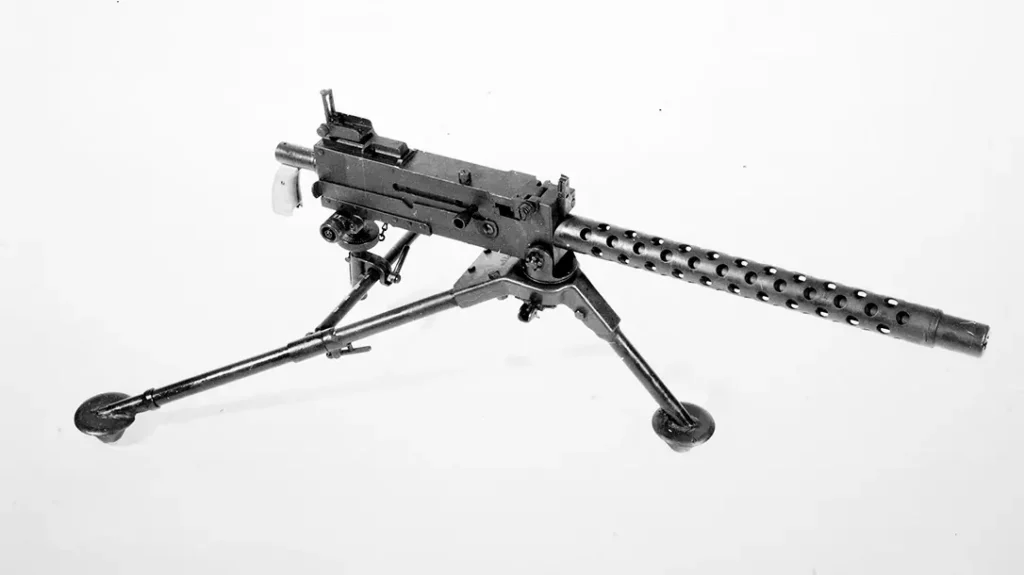
Advertisement — Continue Reading Below
AK-47
The next stop is an Eastern Bloc favorite—the AK-47. Officially known as the Avtomat Kalashnikova, this gas-operated rifle is chambered in 7.62×39mm. Developed in the Soviet Union by Russian small-arms designer Mikhail Kalashnikov, it is the originating firearm of the AK family of rifles. After more than seven decades since its creation, the AK-47 and its variants remain one of the most popular and widely used firearms in the world.
Design work on the AK-47 began in 1945. It was presented for official military trials in 1947, and, in early 1949, the AK was officially accepted by the Soviet Armed Forces. They can be found worldwide due to their reliability under harsh conditions, low production cost, and availability. As of 2004, of the estimated 500 million firearms worldwide, approximately 100 million belong to the Kalashnikov family, three-quarters of which are AK-47s. With the giggle switch set to full-auto mode, the AK-47 can fire up to 600 rounds per minute.
Advertisement — Continue Reading Below

BROWNING AUTOMATIC RIFLE
While not an official name, the BAR is known as the badass rifle. The Browning Automatic Rifle (BAR) is a family of American automatic rifles used by the United States and numerous other countries during the 20th century. The primary variant of the BAR series was the M1918, chambered for the .30-06 Springfield rifle cartridge and designed by John Browning in 1917 for the American Expeditionary Forces in Europe.
Advertisement — Continue Reading Below
The BAR was designed to be carried by infantrymen during an assault advance while supported by the sling over the shoulder, or to be fired from the hip. This is a concept called “walking fire,” which was thought to be necessary for the individual soldier during trench warfare. While this may have been the original intent, the gun was mostly fired from a bipod. The gun remained in several unit armories, including some Ranger Battalions, simply because the ferocity of the gun firing terrified enemy combatants.
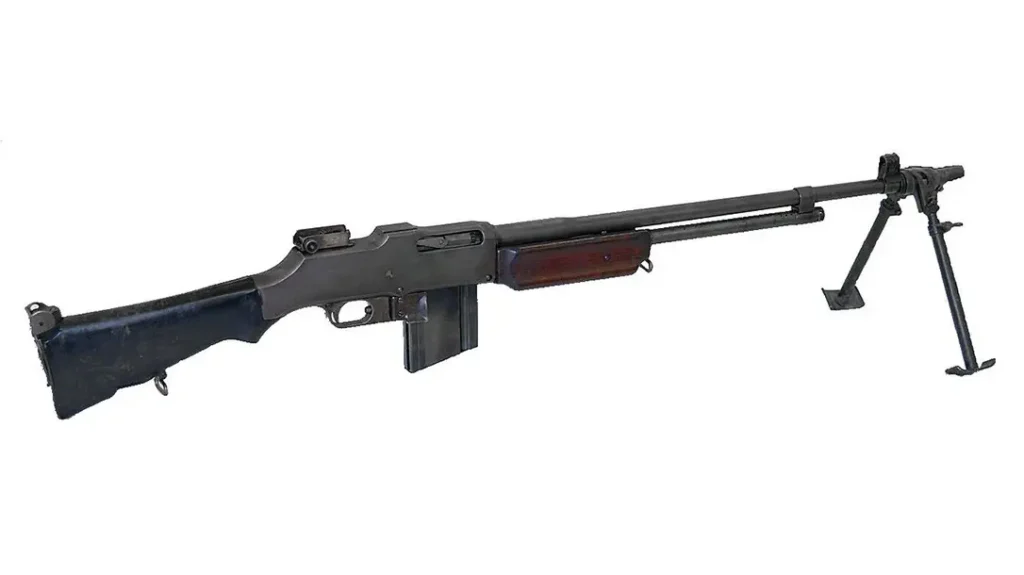
FN M249
The “SAW” or M249 light machine gun (LMG) is also known as the M249 Squad Automatic Weapon. It is manufactured in the United States by the subsidiary FN Manufacturing LLC, a company in Columbia, South Carolina, and is widely used in the U.S. Armed Forces. The weapon was introduced in 1984 after being judged most effective to address the lack of automatic firepower in small units.
Advertisement — Continue Reading Below
The M249 provides infantry squads with a high rate of machine gun fire combined with the accuracy and portability of a rifle. The M249 is gas-operated and air-cooled, and it has a quick-change barrel and a folding bipod attached to the front of the weapon. The SAW can be fed from both linked ammunition and STANAG magazines, allowing the SAW operator to use them as a source of ammunition in case they run out of belts. M249s have seen action in major conflicts involving the United States since the U.S. invasion of Panama in 1989.
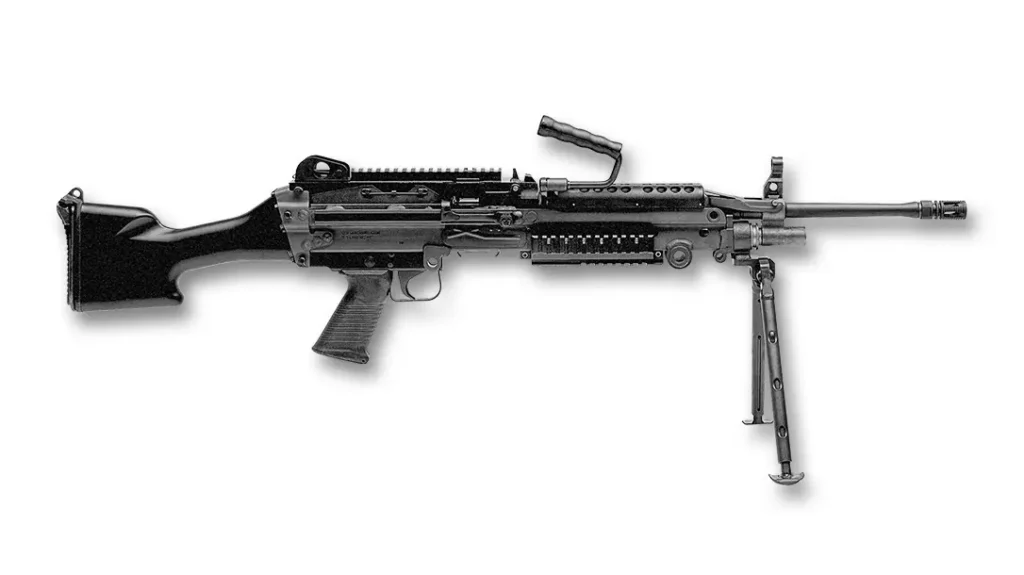
Advertisement — Continue Reading Below
GLOCK 18
The Glock 18. You have seen it and you want one, plain and simple. The Glock 18 is a selective-fire variant of the Glock 17 developed at the request of the Austrian counter-terrorist unit EKO Cobra. While the legend is that they wanted a super small go-fast gun, the truth is that it was a way to test Glock components under high-strain conditions internally. Initially produced in 1986, this machine pistol-class firearm has a lever-type fire-control selector switch installed on the serrated portion of the rear left side of the slide.
With the selector lever in the bottom position, the pistol fires fully automatically at a cyclic rate of 1,100 to 1,200 rounds per minute, and with the selector lever in the top position, the pistol fires semi-automatically. The firearm is typically used with an extended 33-round-capacity magazine and may be fired with or without a shoulder stock. Unlike all its other pistols, it is only offered to military, law enforcement, and government organizations.
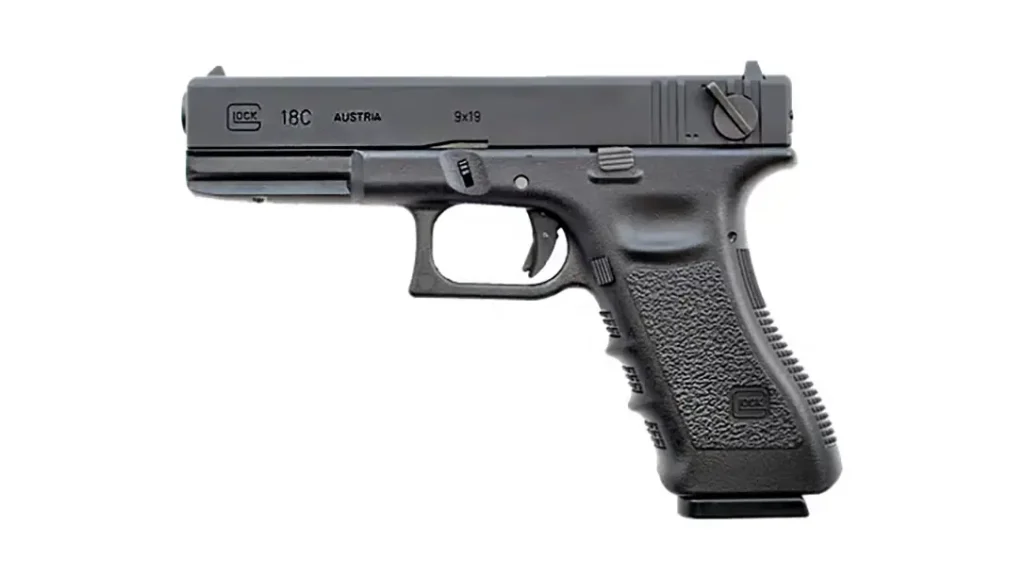
MP5
In the category of ultimate cool, we have the Heckler & Koch MP5. This is a submachine gun that fires 9x19mm Parabellum cartridges and was developed in the 1960s by Heckler & Koch. There are more than 100 variants and clones of the MP5, including some semi-automatic versions. The MP5 is one of the most widely used submachine guns in the world, having been adopted by more than 40 natiMP5ons and numerous militaries, law enforcement, intelligence, and security organizations. Its compactness, accuracy, and reliability have made it a favorite of Special Operations units the world over for more than three decades. The MP5 was, for a time, the weapon of choice for U.S. Counter Terrorist units such as Delta Force and DEVGRU, as well as Navy SEAL boarding teams.
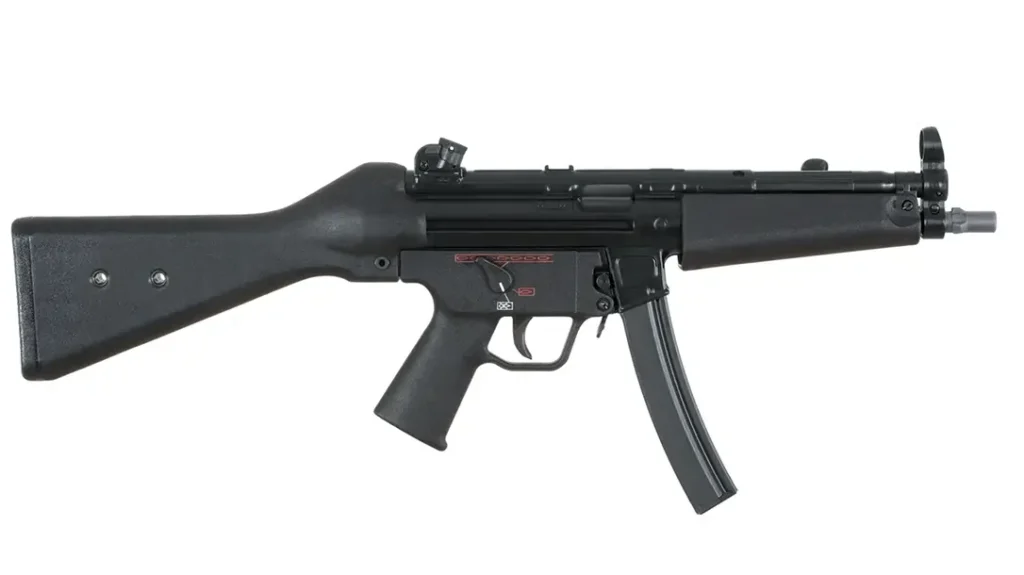
M2
The M2 machine gun or Browning .50-caliber machine gun is lovingly known as the “Ma Deuce.” It is a heavy machine gun that was designed near the end of World War I by John Browning. The M2 uses Browning’s larger and more powerful .50 BMG cartridge. The design has had many designations; the official U.S. military designation for the current infantry type is Browning Machine Gun, Cal. .50, M2, HB, Flexible. It is effective against infantry, unarmored or lightly armored vehicles and boats, light fortifications, and low-flying aircraft.
The gun has been used extensively as a vehicle weapon and for aircraft armament by the United States since the 1930s. It was heavily used during World War II, the Korean War, the Vietnam War, the Falklands War, the Soviet–Afghan War, the Gulf War, the Iraq War, and the War in Afghanistan. It is the primary heavy machine gun of NATO countries and has been used by many other countries as well. U.S. forces have used the M2 longer than any other firearm except the .45 ACP M1911 pistol, which John Browning also designed.
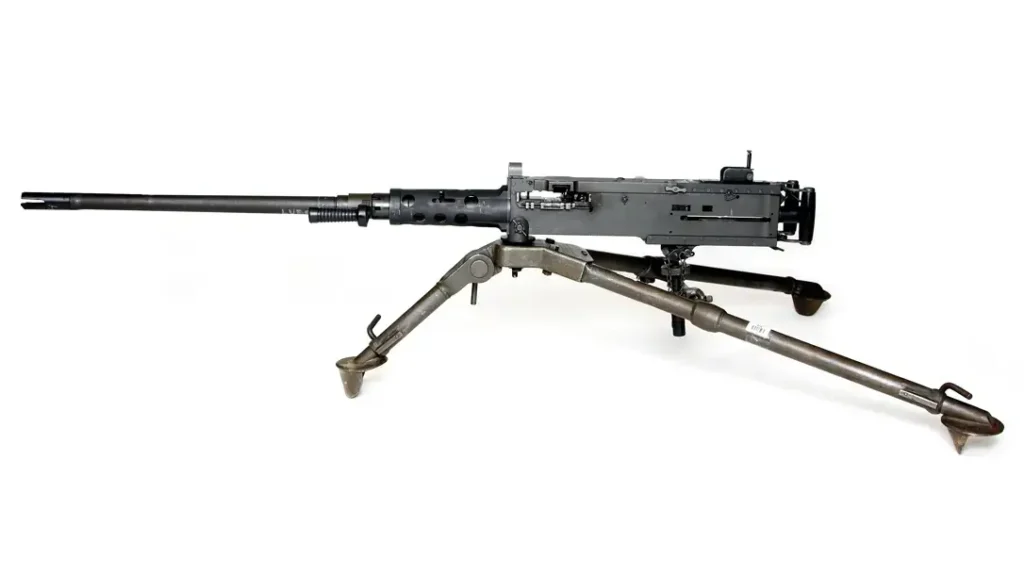
M16
Many wonder if Eugene Stoner knew the legacy his work would create. I refer to the M16 rifle. This is a family of military rifles adapted from the ArmaLite AR-15 rifle for the United States military. The original M16 rifle was a 5.56×45mm automatic rifle with a 20-round magazine. In 1964, the M16 entered U.S. military service, and the following year, it was deployed for jungle warfare operations during the Vietnam War. Adopted in July 1997, the M16A4 is the fourth generation of the M16 series. It is equipped with a removable carrying handle and Picatinny rail for mounting optics and other ancillary devices. Other armed forces around the world have widely adopted the M16. The total worldwide production of M16s is approximately 8 million, making it the most-produced firearm of its 5.56mm caliber.

M60
Known as “The Pig,” the M60 is a family of American general-purpose machine guns firing 7.62×51mm NATO cartridges from a disintegrating belt of M13 links. There are several types of ammunition approved for use in the M60, including ball, tracer, and armor-piercing rounds. It was adopted in 1957 and issued to units beginning in 1959. It has served with every branch of the U.S. military and still serves with the armed forces of other states. Its manufacture and continued upgrade for military and commercial purchase continues into the 21st century. However, it has been replaced or supplemented in most roles by other designs, most notably the M240 machine gun in U.S. service.
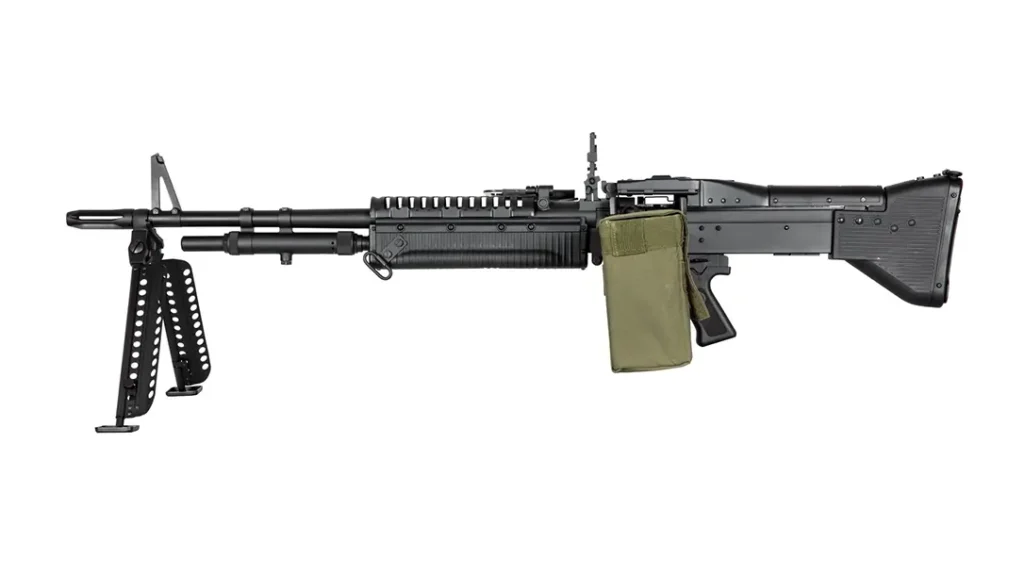
MG 42
Known as “Hitler’s Buzz Saw,” the MG 42 is a German recoil-operated, air-cooled, general-purpose machine gun used extensively by the Wehrmacht and the Waffen-SS during the second half of World War II. Entering production in 1942, it was intended to supplement and replace the earlier MG 34, which was more expensive and took much longer to produce, but both weapons were produced until the end of World War II.
Designed to use the standard German 7.92×57mm Mauser rifle round at a low cost while being easier to mass-produce, the MG 42 proved to be highly reliable and easy to operate. It is most notable for its very high cyclic rate for a gun using full-power service cartridges, averaging about 1,200 rounds per minute. The MG 42’s lineage continued past Nazi Germany’s defeat, forming the basis for the nearly identical MG1 (MG 42/59), chambered in 7.62×51mm NATO.
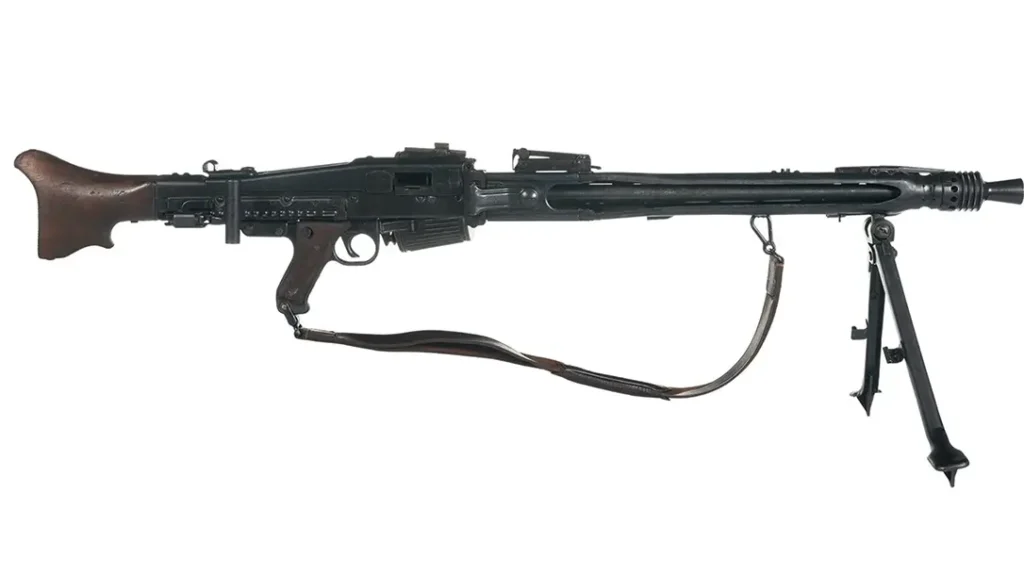
StG 44
The StG 44, also known as the Sturmgewehr, is a German automatic rifle developed during World War II by Hugo Schmeisser. The model was an improvement of an earlier design, the Maschinenkarabiner 42. The StG 44 was the first successful automatic battle rifle, featuring an intermediate cartridge, controllable automatic fire, and a more compact design than traditional battle rifles, with a higher rate of fire. It is designed primarily for hitting targets within a few hundred meters. The StG 44 fulfilled its role effectively, particularly on the Eastern Front, offering a significantly increased volume of fire compared to standard infantry rifles. The StG largely influenced the Soviet AK-47, which was introduced two years after the war concluded. The StG’s influence can still be seen in modern assault rifles, which, after World War II, became the global standard for infantry rifles.
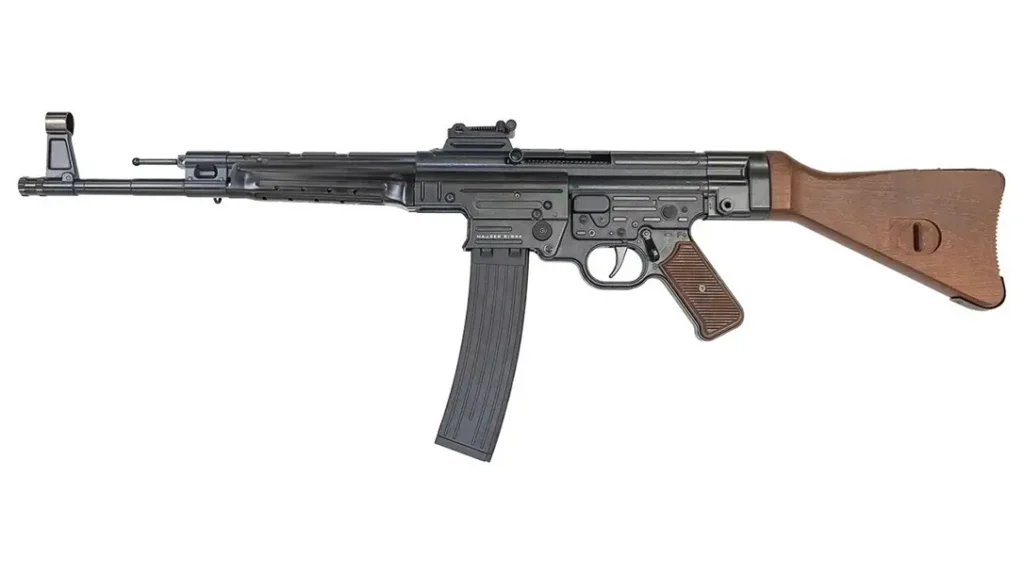
SWEDISH K
The phrase “don’t judge a book by its cover” absolutely applies to the Swedish K. Also known as the Kulsprutepistol m/45 and the Carl Gustaf M/45, the Swedish K SMG is a 9×19mm Swedish submachine gun designed by Gunnar Johansson. It was adopted in 1945 and manufactured at the Carl Gustafs Stads Gevärsfaktori in Eskilstuna, Sweden. The Swedish K was the standard submachine gun of the Swedish Army from 1945 to 1965. The weapon was developed in 1944-45 with a design borrowed from and also improved on many design elements of earlier submachine guns. The sheet metal stamping techniques used in making the German MP 40, the British Sten, and the Soviet PPSh-41 and PPS-43 were studied in detail. Contrary to its less-than-glorious appearance, the Swedish K is one of the smoothest and most enjoyable submachine guns you can ever run.

THOMPSON SMG
The ever classic “Tommy gun,” or more formally, Thompson submachine gun, is a blowback-operated, selective-fire submachine gun invented by United States Army Brigadier General John T. Thompson in 1918. It was originally designed to break the stalemate of trench warfare of World War I, but early models did not arrive in time for combat. The Thompson saw early use by the United States Marine Corps during the Banana Wars, the United States Postal Inspection Service, the Irish Republican Army, the Republic of China, and the FBI following the Kansas City Massacre.
The weapon was also sold to the general public. Because it could be obtained so easily, the Thompson became notorious during the Prohibition era as the signature weapon of various organized crime syndicates in the United States in the 1920s. It was a common sight in the media at the time and was used by both law enforcement officers and criminals. Chambered in .45 ACP, it was heavy and had a very easy-to-manage rate of fire.
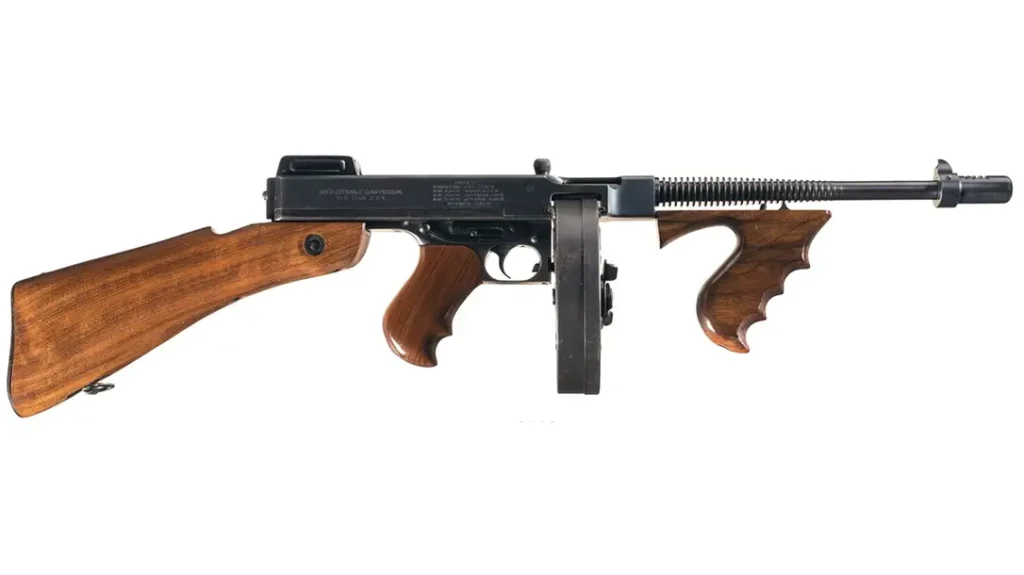
UZI
When President Regan was shot in 1981, a Secret Service member produced one of the most epically cool guns of the day from his jacket—the Uzi. The Uzi is a family of Israeli open-bolt, blowback-operated submachine guns and machine pistols first designed by Major Uziel “Uzi” Gal in the late 1940s, shortly after the establishment of the State of Israel. It is one of the first weapons to incorporate a telescoping bolt design, which allows the magazine to be housed in the pistol grip for a shorter weapon.
The Uzi prototype was finished in 1950. It was first introduced to IDF special forces in 1954, and the weapon was placed into general issue two years later. The IDF supplied Uzis to rear-echelon troops, officers, artillery troops, and tank crews, as well as a frontline weapon by elite light infantry assault forces. From the 1960s through to the 1980s, more Uzi submachine guns were sold to more military, law enforcement, and security markets than any other submachine gun ever made.
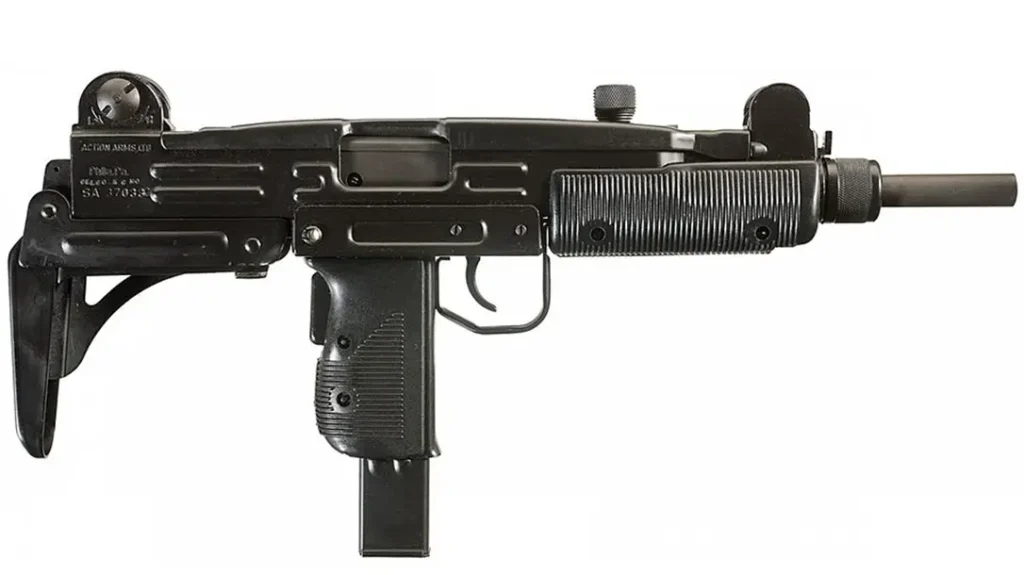
VICKERS MG
When we want to talk about the gold standard of reliability, we need to talk about the Vickers machine gun. It is a water-cooled .303 British (7.7 mm) machine gun produced by Vickers Limited, originally for the British Army. The gun was operated by a three-man crew but typically required more men to move and operate it: one fired, one fed the ammunition, and the others helped to carry the weapon, its ammunition, and spare parts.
It was in service from before the First World War until the 1960s, along with air-cooled versions of it on many Allied World War I fighter aircraft. The weapon had a reputation for great reliability. Ian V. Hogg, in Weapons & War Machines, describes an action that took place in August 1916 during which the British 100th Company of the Machine Gun Corps fired their 10 Vickers guns to deliver sustained fire for 12 hours. Using 100 barrels, they fired a million rounds without breakdowns.
